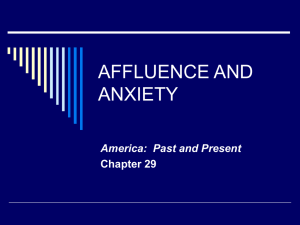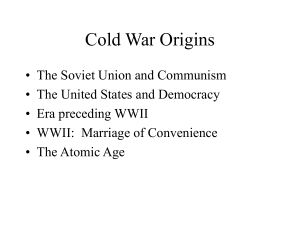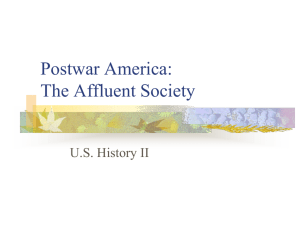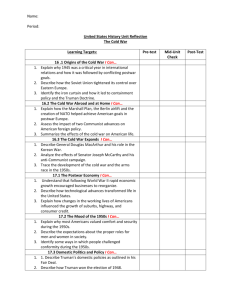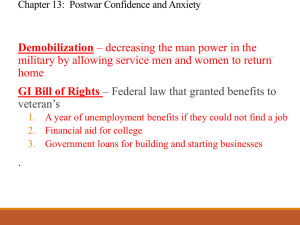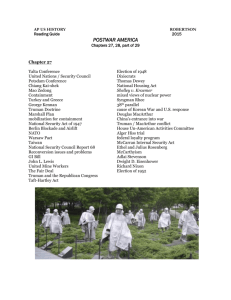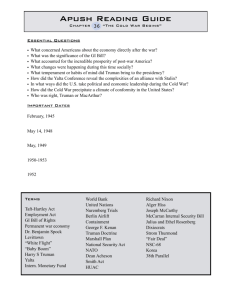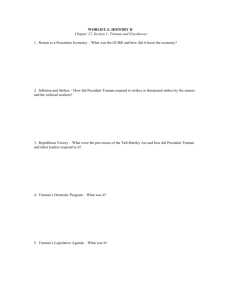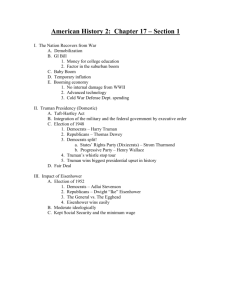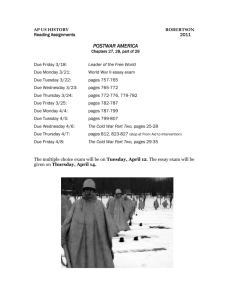Chapter 26 Postwar America at Home, 1945-1960
advertisement
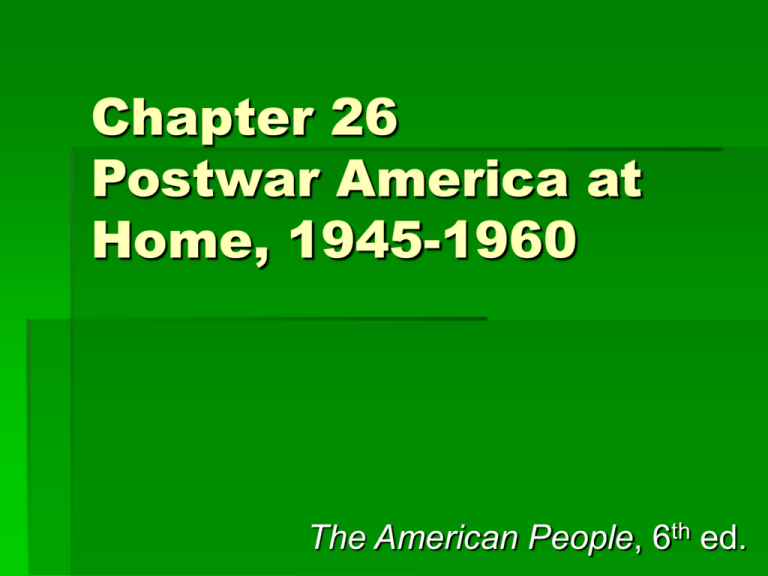
Chapter 26 Postwar America at Home, 1945-1960 The American People, 6th ed. I. Economic Boom The Thriving Peacetime Economy The years following World War II saw one of the longest sustained economic expansions in the history of the U.S. The automobile industry played a key role in the expansion with millions of cars quickly produced and the steady construction of the interstate highway system Changing Work Patterns At this point in history, the United States stopped being primarily a goods producer and began a new path as a service provider People enjoyed the leisure resulting from work which was characterized by conformity and “belongingness.” White-collar and blue-collar workers enjoyed a higher standard of living than ever before II. Demographic and Technological Shifts Population Growth During the Great Depression, the birthrate had dropped to an all-time low The birth rate exploded as millions of postwar Americans began families The death rate was also declining due to peacetime and new medical breakthroughs Movement West Postwar American became more mobile than ever before; most headed west Cities throughout the Sunbelt South and West coast saw enormous growth as Americans who had been stationed in these areas returned after the war. Population also shifted away from the traditional city centers to outlying suburbs where housing was cheaper Technology A technological revolution transformed the war efforts of the Atomic Commission into a collection of scientist hard at work to improve transportation, satellites, and other consumer goods that were often the byproducts of military research The new field of computers also reflected the technology of the era; tiny transistors would help miniaturize computers for use in many items from ovens to vacuum cleaners III. Consensus and Conformity Traditional Roles for Men and Women The necessities of World War II had interrupted the natural progression of social roles for men and women Postwar, men and women had different expectations: education and business for men and homemaking and childrearing for women Slow change during the decade reestablished the working patterns of the war: women found more entry points into corporate America Cultural Rebels Influences of mysticism and Buddhism Writers of the “Beat Generation” Jack Kerouac and Allen Ginsberg: developed new styles of writing; introduction of the paperback novel Elvis Presley and new rebellion of Rockn-Roll Art experimentation: Jackson Pollock IV. Origins of the Welfare State Harry Truman America’s first postwar president Believed the federal government held the responsibility of ensuring social welfare of Americans His liberal program of social reform was rejected by Congress, but he was elected to his first stand-alone term (Truman replaced Roosevelt after his death) despite a split within the Democratic Party The Fair Deal With a new national mandate as a result of the election, Truman again tabled his liberal social program which would be known as the “Fair Deal” Despite mixed results and some failures, Truman was responsible for keeping the Democratic Party alive after its near collapse Ike Truman’s popularity fell drastically during his term Former General Dwight D. Eisenhower was elected the next Republican president The opposite to Truman in almost every way, Eisenhower was a restrained president and desired a limited role of the presidency in national affairs V. The Other America Poverty Amid Affluence Economic growth of the era favored the middle and upper classes Fully one third of the population lived substandard existences, usually along the lines of race African Americans continued to be this country’s least prosperous group of citizens

